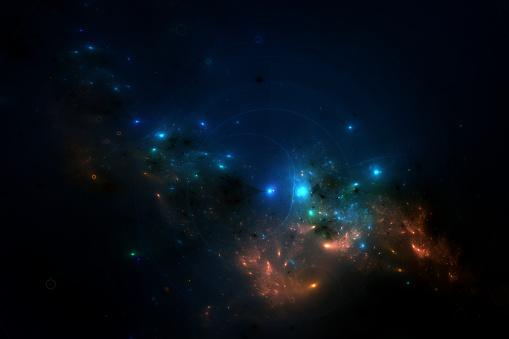Using a new method to scan telescopic images, a team of astronomers led by Canada’s Herzberg Research Center for Astronomy and Astrophysics He believes he has detected objects moving far beyond the Kuiper belt. This distant region of the Solar System is filled with small icy bodies such as dwarf planets, comets, and other objects located at 48 AU, units that measure the distance between the Earth and the Sun.
The research, presented at the 54th Lunar and Planetary Science Conference (LPSC 2023) in May, was initially intended to discover new targets for NASA’s New Horizons probe.. Launched in 2006, the spacecraft explored the Pluto system and continued its journey at 60,000 km/h, currently 56 AU from Earth.
This allowed the artifact, which has not yet officially left the Solar System, to explore the Kuiper belt, a world composed mostly of ice and volatile materials. New Horizons discovered the most distant world ever observed in this region: Arrokoth object, a reddish snowman-shaped rock, It is 35 kilometers long, 20 kilometers wide and 10 kilometers thick.
Arrokoth object in the Kuiper Belt
Coincidentally, the publication of the research Suggests the existence of a second belt beyond Kuiper It happened almost simultaneously with a new study led by renowned planetary scientist Alan Stern.
In this study, astronomers from the Southwest Research Institute (SwRI) argue that the 12 large mounds on Arrokoth, approximately 5 kilometers long, have a common planetary origin.
Working on two close-up images taken from New Horizons’ flyby of Arrokth in 2019, researchers evaluated how Wenu, the largest part of the object, was formed. Two formation scenarios were analyzed: smaller objects around three kilometers in diameter colliding at high speed; or larger objects, up to five kilometers in diameter, that slowly clump together over time.
The team evaluated the geological context of the Wenu Hills and compared their shapes, sizes/orientations, reflectances and colours. The result disproved the high-velocity thesis, as the object resulting from the supposed disintegration of rocks turned out to be smooth and very different from the irregular bubble obtained in the second model, which was very similar to the dominant lobe of Arrokoth. The smaller wolf Weeyo may have formed in the same way.
Beyond Arrokoth: A dive into the darkness of the Solar System
Although the exploration mission has been extended by NASA until it leaves the Kuiper belt, at least officially, New Horizons will have no easy task ahead. This is because observing landscapes at a distance of almost 60 AU from the Sun is an uncertain task, to say the least.

A technique often used by astronomers is called “shift stacking” and consists of taking photographs at different times and then stacking them on top of each other and combining them. This makes it possible to combine light from a poorly lit object into one point, making it more visible.
Researchers used machine learning to eliminate this infamous exercise of searching for small rocks hidden among dark clumps of images. To do this, they trained a neural network on simulated objects added to images from the telescope, before releasing it for analysis of real data obtained by the Subrau Telescope in Hawaii in 2020 and 2021. New technique detects twice as many objects in Kuiper Belt as human search.
Two rings of icy objects in the Solar System?

Results of the new study, which increases the density of material at distances between 60 and 80 AU along New Horizons’ orbit, may provide an explanation for the unusual brightness detected by both the probe and the Hubble Space Telescope. This is the “reflective dust layer in the outer Solar System” It may have been caused by other yet unknown debris.
Considering that similar searches elsewhere in the sky have failed to detect this wealth of orbital objects, it is necessary to question whether this is just bad luck, whether there is really something new in the Solar System, or whether there is a new learning technique. The machine has some bugs that need to be resolved.
It has not yet been peer-reviewed, New study points to the possible existence of at least two “rings” of icy material orbiting our Solar SystemWith at least 50 AU space between them.
Stay up to date with the latest astronomy discoveries on TecMundo!
Source: Tec Mundo
I’m Blaine Morgan, an experienced journalist and writer with over 8 years of experience in the tech industry. My expertise lies in writing about technology news and trends, covering everything from cutting-edge gadgets to emerging software developments. I’ve written for several leading publications including Gadget Onus where I am an author.













